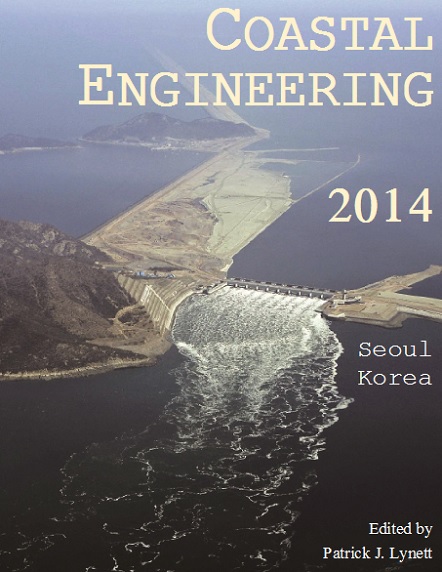Abstract
When a dredge mixture deserts a hopper through its overflow structure, often significant volumes of air are entrained into the mixture. The air entrainment is a result of "hydraulic jump† turbulence generated in the core of the (often circular) overflow structure. When the mixture discharges into the sea at the exit of the overflow structure, a density current is created in the near-field. The near-field sediment processes are important as they feed the more far-reaching dredge plumes. Once discharged, the trapped air tends to segregate from the overflow plume owing to its buoyancy and the rising of bubbles towards the surface of the sea is reported to have a pronounced effect on near-field dispersion and to obstruct settling of the mixture sediments. The near-field dispersion weakens the strength of the density current which is highly undesirable as it increases the foot-print of the dredge plume. Plumes with high levels of turbidity may have severe impacts on coastal environments, and dredge operations are therefore often forced to reduce production rates to reduce dredge plume foot-prints in order to comply with environmental regulations. One of the more recognized measures in reducing plume foot-prints is combating air entrainment with the so-called green valve device, also known as the environmental valve. The green valve is rigged within the shaft of the overflow structure and the fundamental idea is to increase the hydraulic resistivity inside shaft leading to increased submergence of the overflow, which results in less air entrainment.References
Hirt, C. and Nichols, B. (1981). "Volume of fluid (VOF) method for the dynamics of free boundaries.† Journal of Computational Physics, 39(1), 201-225.
Jain, A., Garde, R., and Raju, K. R. (1978). "Air entrainment in radial flow towards intakes.† Journal of the Hydraulics Division, 104(9), 1323-1329.
Jan de Nul (2003). "SPECIALISED ALTERNATIVE DREDGING METHODS.† 3er Congreso Argentino de Ingenieria Portuaria.
Parys, M. V., Dumon, G., Pieters, A., Claeys, S., Lanckneus, J., Lancker, V. V., and Vangheluwe, M. (2000). "Environmental monitoring of the dredging and relocation operations in the coastal harbours in Belgium: MOBAG 2000.† WODCON XVI, Vol. 32, Kuala Lumpur, Malaysia.
Whillock, A. and Thorn, M. (1973). "Air Entrainment in Dropshafts.
Authors retain copyright and grant the Proceedings right of first publication with the work simultaneously licensed under a Creative Commons Attribution License that allows others to share the work with an acknowledgement of the work's authorship and initial publication in this Proceedings.

